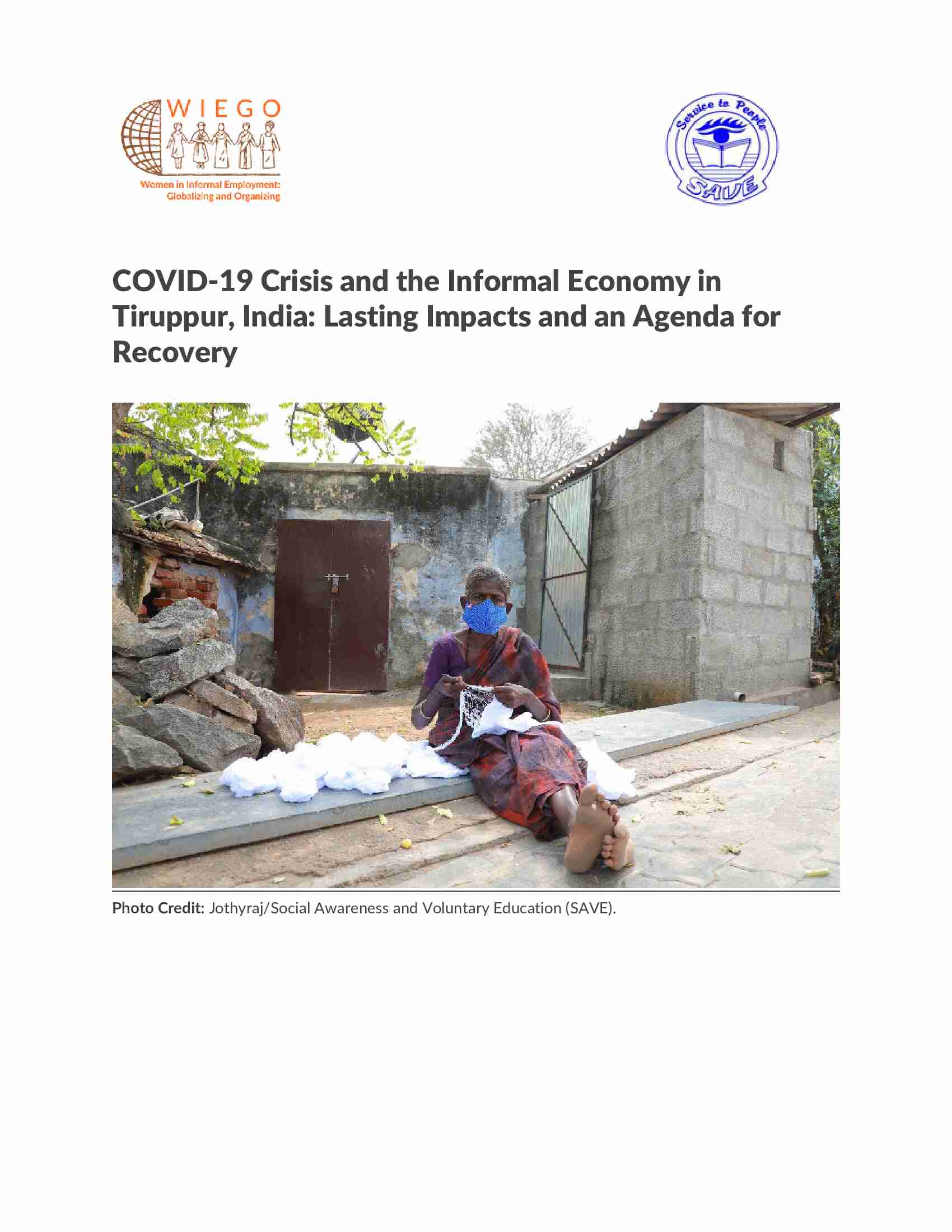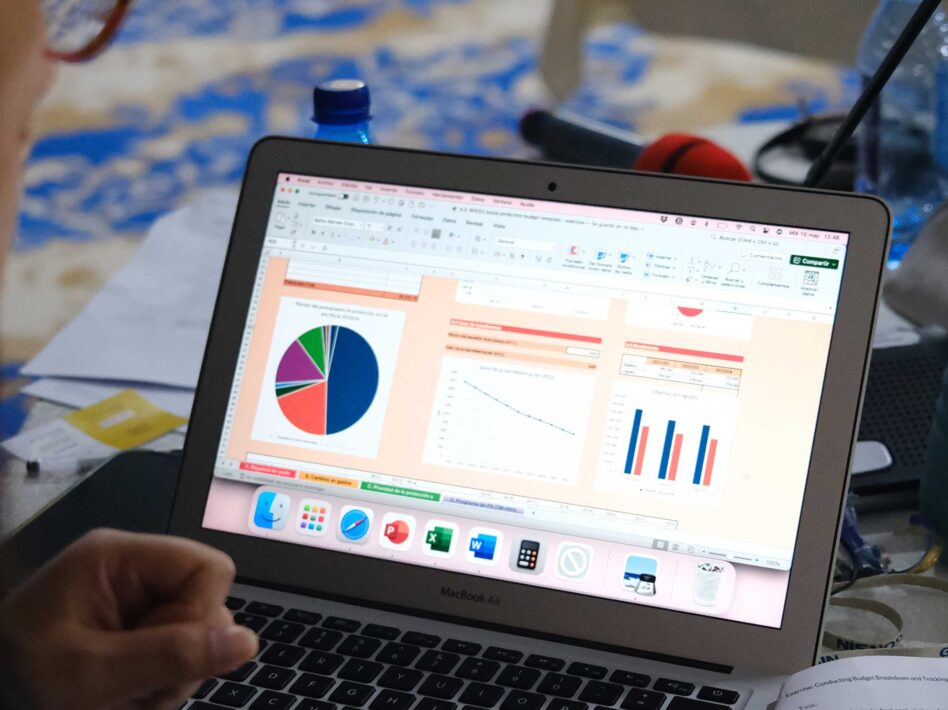COVID-19 Crisis and the Informal Economy in Tiruppur, India: Lasting Impacts and an Agenda for Recovery
Known as the “T-Shirt Capital of the World”, Tiruppur is the seventh largest city in Tamil Nadu State, South India. Around 800,000 workers are employed in the knitwear industry, of whom 80,000 (10%) are homeworkers; that is, subcontracted workers who are paid by the piece and work in or around their own homes. Over 90% of homeworkers in Tiruppur are women. This report presents the TIruppur findings from Round 2 of the WIEGO-led COVID-19 Crisis and the Informal Economy study that was conducted in mid-year 2021 to assess how specific groups of informal workers and their households were experiencing COVID-19 resurgences and ongoing economic strains, and to what extent (if any) they had recovered.
Key Findings
- In mid-2021, only 16% of respondents were able to work (even part time) in the previous month, compared to 25% in June 2020 and 12% in April 2020.
- In mid-2021, on average, the respondents worked less than one day (0.7) per week, the same as in April 2020, compared to 1.1 days per week in mid-2020 and 4.5 days per week in February 2020 (pre-COVID-19).
- Between July 2020 and June 2021, 60% of home-based workers were able to find work for less than 10 days per month for four months or more.
- The main reasons cited for the insecurity of work were government and factory restrictions (84% of respondents), market and supply chain dynamics (61%), and lack of public transport (16%).
- In mid-2021, 88% of the home-based workers had zero income in the previous month. On average, they were earning less than half per day (INR 21) of what they earned in mid- 2020 (INR 53) and of what they earned during the national lockdown in April 2020 (INR 47), and only 6% of what they earned in February 2020 (INR 368).
- In mid-2021, 24% of respondents reported hunger among adults in their household and 7% of respondents who have children under 16 in their households reported hunger among children, compared to 30% and 27%, respectively, in mid-2020.
- Since mid-2020, 75% of the respondents had received some cash relief and 88% had received some food aid from government, compared to 92% and 95%, respectively, between April and June 2020.
- Since mid-2020, just under 20% of respondent households had to resort to asset-depleting strategies to cope with the on-going crisis and second lockdown.
View list of all: City/Country Level Reports

